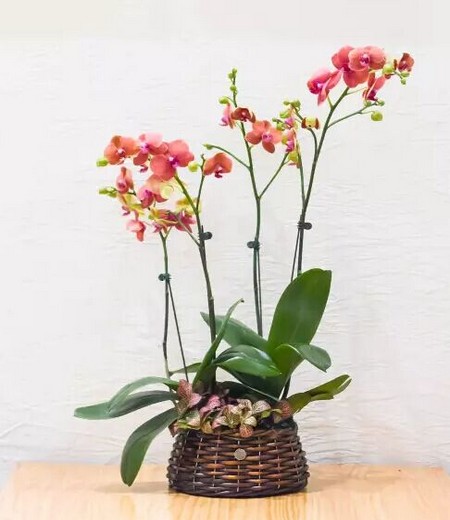Cultivation techniques of coral bean potted landscape
The red fruits of coral beans are extremely beautiful and attractive against the green leaves in autumn. It is a first-class ornamental fruit plant, this plant is a small shrub of the genus Solanaceae, its plant height can reach 1 meter, but is often cultivated as an annual or biennial. The fruit is bright in color and can be enjoyed.

Seeds are often used to propagate. Ripe berries are collected in winter and spring, washed in water, dried and stored for seed preparation. The stored seeds are sown in indoor shallow pots in spring. Sowing flowers germinate quickly, neatly and grow fast. After the seedlings grow 3-4 leaves, replace them with 10 cm pots, or transplant them in an open-field seedbed.
Generally, the seedlings are sown in the pot from March to April in spring, and the seedlings emerge quickly and neatly. when the seedlings grow 2-3 true leaves, they should be planted once in the collapsing pot; when they grow to 5-6 true leaves, they will be put on the pot respectively, and they can also be transplanted to the border as ground planting.
Potted plants should be watered thoroughly, placed in a semi-shady place, slow the seedlings for a week and then move to the sun. After planting, you should pay attention to shade for a period of time. When the seedling grows to about 30 cm, it can be turned over and planted in a larger basin.
Seedling cultivation, maintenance can be more extensive, to August-September with soil on the basin, after winter, should be moved into the indoor sunny place, pay attention to keep the room temperature at 5 ℃ or a little higher.
After the summer temperature is high, we should often spray water to humidify and cool down, but also prevent the storm and rain blowing and watering, usually apply cake fertilizer or manure once a week, and apply phosphate fertilizer several times before and after flowering, which can reduce falling flowers and help set fruit.
During flowering, the water can not be watered more, the soil should be slightly dry and wet, which is also helpful to prevent falling flowers. After fruit setting, it is necessary to master the moderate degree of dryness and wetness. Too dry and too wet will lead to fruit drop.
For old plants, heavy cutting should be carried out in time before the beginning of spring, leaving 3-4 buds in stout lateral branches and 1-2 buds in weak branches. At the same time, they should turn the basin, apply enough base fertilizer when turning the basin, and trim off part of the weak old roots. In the future, too many new shoots that sprout should be thinned out appropriately.
In the summer high temperature season, if the rain is drenched or the basin soil is too wet, anthracnose is easy to occur. Fungicides can be sprayed regularly after the beginning of summer, such as alternating use of Dysen zinc and topazine.
Time: 2019-05-25 Click:
- Prev

Planting techniques of potted Phalaenopsis
The butterfly orchid gets its name from the shape of the butterfly, which means I love you and symbolizes nobility and elegance. It is one of the most popular flowers in the Spring Festival. It is favored by the world for its bright colors, diverse varieties and graceful posture. Festivals and high-end banquets are decorated with Phalaenopsis. Phalaenopsis can be put into pots or placed on a single plant.
- Next

Planting technique of potted calla
In recent years, potted colored calla lilies have become the best-selling species in the Beijing New year Flower Market. Colorful calla lilies are loved by people because of their beautiful and unique flowers, rich and colorful flowers, and many changes in leaf color and leaf shape. The production advantage of potted colored calla is obvious, and its production cost can be controlled.
Related
- Fuxing push coffee new agricultural production and marketing class: lack of small-scale processing plants
- Jujube rice field leisure farm deep ploughing Yilan for five years to create a space for organic food and play
- Nongyu Farm-A trial of organic papaya for brave women with advanced technology
- Four points for attention in the prevention and control of diseases and insect pests of edible fungi
- How to add nutrient solution to Edible Fungi
- Is there any good way to control edible fungus mites?
- Open Inoculation Technology of Edible Fungi
- Is there any clever way to use fertilizer for edible fungus in winter?
- What agents are used to kill the pathogens of edible fungi in the mushroom shed?
- Rapid drying of Edible Fungi

